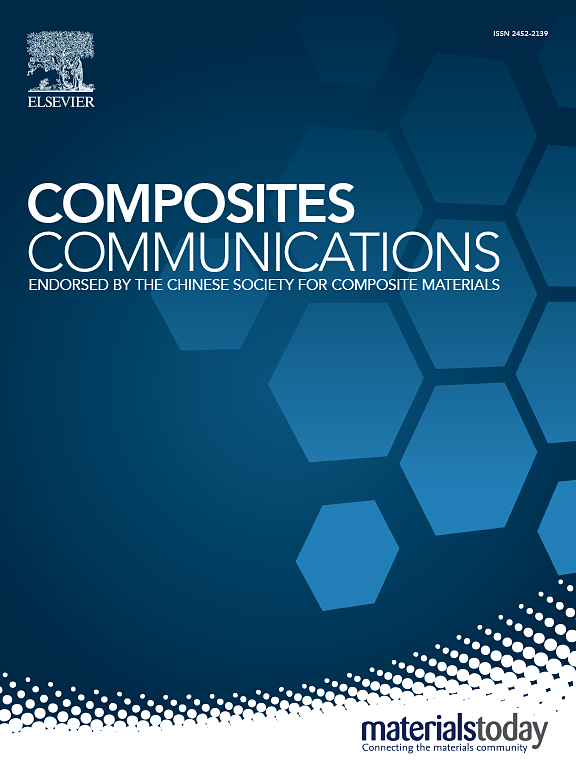Preparation and surface modification of vertically structured indium/graphite elastomer thermal pad for effective heat dissipation
IF 7.7
2区 材料科学
Q1 MATERIALS SCIENCE, COMPOSITES
引用次数: 0
Abstract
In recent years, with the increasing integration level of modern electronics and the rise of artificial intelligence (AI) models, the development of advanced thermal interface materials (TIMs) for heat dissipation in high-power chips has become indispensable. Here in this work, based on the intrinsic high thermal conductivity of graphite and indium, the densely aligned vertical indium/graphite (@VInGr) thermal pad is prepared. The @VInGr exhibites a high through plane thermal conductivity (κ⊥ of 103.6 W/m·K) and low compression modulus (1.45 Mpa). Based on the excellent wettability of liquid metal (LM) on indium, we performed surface modification to reduce the thermal resistance and further improve heat dissipation efficiency. As a result, due to the formation of a ‘solid-liquid’ interface bridge, the total thermal resistance (Rtotal) decreased from 0.58 cm2 K/W to 0.38 cm2 K/W. Practical heat dissipation tests shows that when LM/@VInGr/LM is used as a thermal interface material (TIM), the temperature of LED bulb significantly decreases compared to commercial thermal pads (decreased: ΔT = 8.6 °C). These results demonstrate that the surface modified @VInGr composite thermal pad has pioneered a new TIM for effective thermal management in modern high-power electronics.
有效散热的垂直结构铟/石墨弹性体热垫的制备和表面改性
近年来,随着现代电子产品集成度的不断提高和人工智能(AI)模型的兴起,开发用于大功率芯片散热的先进热界面材料(TIMs)变得必不可少。本文基于石墨和铟固有的高导热性,制备了密集排列的垂直铟/石墨(@VInGr)热垫。vingr具有高透面导热系数(κ⊥为103.6 W/m·K)和低压缩模量(1.45 Mpa)。基于液态金属(LM)对铟优异的润湿性,我们进行了表面改性,以降低热阻,进一步提高散热效率。结果,由于“固液”界面桥的形成,总热阻(Rtotal)从0.58 cm2 K/W下降到0.38 cm2 K/W。实际散热测试表明,当LM/@VInGr/LM作为热界面材料(TIM)时,LED灯泡的温度比商用热垫明显降低(降低:ΔT = 8.6°C)。这些结果表明,表面改性的@VInGr复合热垫开创了一种新的TIM,用于现代大功率电子设备的有效热管理。
本文章由计算机程序翻译,如有差异,请以英文原文为准。
求助全文
约1分钟内获得全文
求助全文
来源期刊

Composites Communications
Materials Science-Ceramics and Composites
CiteScore
12.10
自引率
10.00%
发文量
340
审稿时长
36 days
期刊介绍:
Composites Communications (Compos. Commun.) is a peer-reviewed journal publishing short communications and letters on the latest advances in composites science and technology. With a rapid review and publication process, its goal is to disseminate new knowledge promptly within the composites community. The journal welcomes manuscripts presenting creative concepts and new findings in design, state-of-the-art approaches in processing, synthesis, characterization, and mechanics modeling. In addition to traditional fiber-/particulate-reinforced engineering composites, it encourages submissions on composites with exceptional physical, mechanical, and fracture properties, as well as those with unique functions and significant application potential. This includes biomimetic and bio-inspired composites for biomedical applications, functional nano-composites for thermal management and energy applications, and composites designed for extreme service environments.
 求助内容:
求助内容: 应助结果提醒方式:
应助结果提醒方式:


